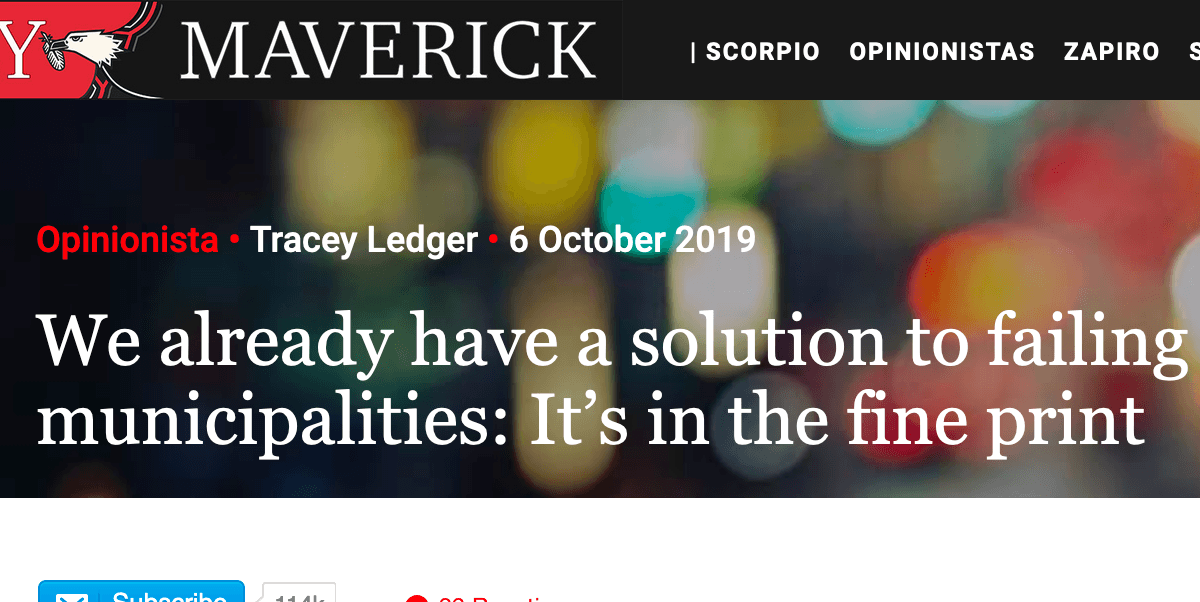By Tracy Ledger
If we have a cleverly designed and detailed piece of constitutional legislation designed specifically to prevent it, why do we have municipalities in total collapse? The short answer is that all parties tasked with implementing section 139 have failed to act in the spirit and letter that the legislation requires.
Local government has been identified as one of South Africa’s most pressing problems. Many municipalities face operational and financial challenges. More than 100 had unfunded budgets in the last financial year, but a relatively small group – around 30 – are in a state of almost total collapse. They regularly get extremely poor audit opinions, service delivery is close to non-existent, and workers and suppliers are not paid. The cases seem hopeless, beyond any assistance.
It is surprising, therefore, that policymakers concluded some 20 years ago that local government could not be allowed to fail. South Africa would, for the first time, have wall-to-wall municipalities, each allocated a long list of development responsibilities. Local government would be central to achieving the goals of the developmental state. It was thus of utmost importance that it functioned at (at least) a certain minimum level of financial and operational efficiency. Despite the new inter-governmental framework that made local government an autonomous sphere, this autonomy did not extend to any “right” to operational and financial collapse. To prevent such collapse, a mechanism was required for provincial and national government to intervene before that happened. The result was section 139 of the Constitution. The first version (in the 1996 Constitution) only included one type of discretionary intervention (to be undertaken by a province) that could be triggered by “a failure to fulfil an executive obligation” – to deliver a municipal service, such as water reticulation or waste management. A range of options is available for such a discretionary intervention, including that the province takes over responsibility for the delivery of that particular municipal function.
This original version did not include any specific remedies for financial problems. Once the new local government structure was in place after 2000, however, there was growing concern within National Treasury that section 139 was not broad or powerful enough to ensure that municipalities could be prevented from falling into financial collapse. Specifically:
-
There was no clear basis for intervention for financial problems;
- There was no clear process for how serious financial problems were to be addressed in an intervention; and
- Treasury wanted an additional mechanism to ensure that an intervention in respect of a serious financial problem would, in fact, take place, even if a province had decided not to intervene.


